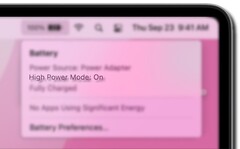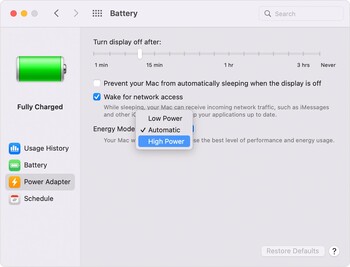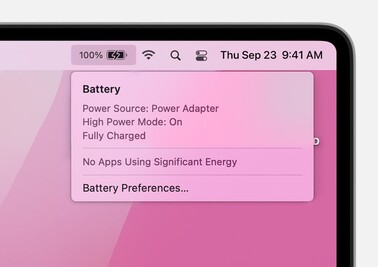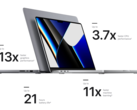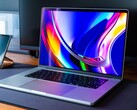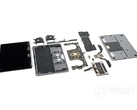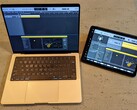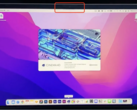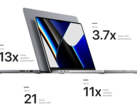We recently reported about Luke Miani’s comprehensive series of benchmark tests for two variants of the MacBook Pro 16, with one model featuring the M1 Pro Apple Silicon and the other sporting an M1 Max SoC. One of the lesser-known features of the 16-inch MacBook Pro with M1 Max SoC is its ability to switch from low-power mode to high-power mode to squeeze more performance out of the laptop for use in heavy computational tasks such as video editing or working with 8K content. Basically, high-power mode allows more energy to be used by the cooling fans thus permitting the chip to operate at higher frequencies over longer periods.
Miani put the MacBook Pro 16 through multiple benchmarks that included Final Cut Pro workloads, DaVinci Resolve, Geekbench, GFXBench, and Cinebench R23 among others. Most of the results for the MacBook Pro 16 with M1 Max running in high-power mode were very similar to the regular round of testing, with perhaps a few extra points being scored here and there. There were notable differences in both Geekbench Compute and GFXBench T-Rex, with high-power mode affording the M1 Max MacBook Pro the ability to produce a better result (see screenshots below). However, it’s clear to see, at least here, that the MacBook Pro 16 high-power mode pretty much fails to impress and almost seems like a superfluous function.
But there may have been a flaw in the testing method, as the host simply states that the M1 Max-powered laptop has been put into high-power mode for the additional testing. There are three energy modes available to this particular MacBook Pro: Low Power, Automatic, and High Power. If the original tests were made with the machine in low-power mode then the high-power mode results can be considered disappointing in comparison. But if the M1 Pro vs. M1 Max MacBook Pro benchmarks featured the latter device in automatic mode, it’s likely it was already switching to high-power mode at times anyway, hence the similar results.
Buy the Apple 16-inch MacBook Pro with M1 Max chip on Amazon
Source(s)
All benchmark screenshots via Luke Miani


 Deutsch
Deutsch English
English Español
Español Français
Français Italiano
Italiano Nederlands
Nederlands Polski
Polski Português
Português Русский
Русский Türkçe
Türkçe Svenska
Svenska Chinese
Chinese Magyar
Magyar